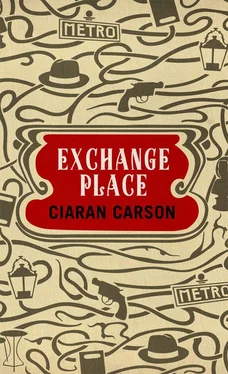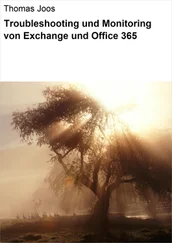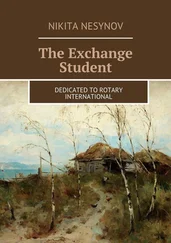Kilpatrick looked at his watch. Out of the corner of his eye he could see Chinese Gordon doing the same. They caught each other’s eye. I don’t know about you, whispered Gordon, but I could do with another drink. Kilpatrick nodded. They slipped out. They emerged on Rue du Bac. They walked down Rue du Bac. A fog had descended and they walked from oasis of dim light to oasis of dim light under the streetlamps. Rue du Bac, Ferry Street, thought Kilpatrick. Fog rolling in from the Seine. The original ferry had transported stone from the quarries of the Left Bank to the Right Bank to build the Palais des Tuileries in the sixteenth century. Built on a site formerly occupied by a complex of tile kilns, hence the name. The palace had been destroyed by fire during the suppression of the Paris Commune in 1871. Fire, clay, smouldering stone ruins. It lay as a burnt-out shell until demolished in 1883. Some years ago proposals had been made to rebuild the palace in its former image, using the original plans and archive photographs. A magnificent simulacrum. Fake, if you like, what was the word? Une falsification . Kilpatrick remembered walking the Old Town of Warsaw, meticulously reconstructed after having been razed to the ground by the Nazis at the end of the Second World War. For all its period detail the area was drained of aura, the streets off the main square practically empty in contrast to the cacophony of the brutalist city beyond. It was like being on a film set. He was wearing a white trench coat and thought of himself as a detective who would find himself in a clandestine labyrinth behind the bland facades. Negotiations in dark cellars reached by darker stairwells.
Gordon halted at the corner of Rue Paul-Louis Courier. Where to? said Kilpatrick. I know a place, said Gordon. Les Caves des Changes, you’ll like it. Sort of private club, don’t you know, said Gordon, in order to be in the club you have to know about it, and not many do. Rules out practically everyone. Then it depends if they let you in. I should warn you in advance, and depending whether they let you in, that should you ever divulge its existence to anyone, you’ll be barred for life. Of course I’m one of the several exceptions to that rule, otherwise I wouldn’t be telling you about it, would I? I can introduce a candidate, but Les Caves reserves the right to refuse admission. Proper order too. And who introduced you? said Kilpatrick. Why, John Bourne, said Gordon, the man I took you for.
I am free to return to my home. On the midday Radio Ulster news it was announced that at ten o’clock that morning the security forces carried out a controlled explosion on the white Volkswagen people-carrier parked on the forecourt of the Antrim Road Plaza. It was envisaged that residents of the evacuated zone would be able to return to their homes that afternoon, and on the three o’clock news it was announced that it was now indeed safe for them to do so. When I arrive at Elsinore Gardens the forecourt of the plaza is still cordoned off, but traffic is flowing freely on the Antrim Road. Near normality has been restored. The forecourt is strewn with wreckage, twisted bits of metal, exhaust pipe, windscreen wipers, shattered glass. The car doors are scattered at different angles and distances from the body of the Volkswagen, like alien shields dropped on a battlefield. Behind the white security tape a team of forensic operatives are examining the ground. I stand and watch them. They are dressed in white hooded coveralls, white face masks, white gloves and white boots. I think of a Second World War commando film set in the Alps. I count eleven of them walking nearly shoulder to shoulder like a line of infantry. Their progress is painstakingly slow, their eyes scanning, covering the ground inch by inch. Every so often one of them stops, stoops, and picks up something that to me is invisible.
Before abandoning my novel X + Y = K , I had done some desultory research into forensic science and remembered the phrase ‘every contact leaves a trace’, known as Locard’s Exchange Principle, after Edmond Locard, the pioneer of forensic science who set up the first police laboratory in an attic room in Lyons in 1910. Locard established that we leave traces of ourselves everywhere, from our bodies, our clothes, our shoes — fingerprints, hairs, fibres, paper, paint chips, soils, metals, botanical materials, gunshot residue. The microscopic debris that covers our clothing and bodies, said Locard, is the mute witness, sure and faithful, of all our movements and all our encounters. Locard became known as the Sherlock Holmes of France; indeed, Locard acknowledged that he had been influenced by the fictional detective. ‘Sherlock Holmes was the first to recognize the importance of dust,’ said Locard. ‘I merely copied his methods.’ Locard was also a passionate philatelist, the author of several books on stamps, including Manuel du philatéliste , in which he devoted a section to the identification of forgeries — les falsifications . Locard applied his microscope to stamps as he would to the traces of a human being; stamps were graphic cellular tissue, from which whole histories could be deduced. The world was a series of correspondences.
I turn the key in the lock and the door opens. I enter the hallway and again I feel the house haunted by my absence, for all that I am here. The atmosphere holds the ghost of my breathing, smoke of cannabis and American Spirit; every room contains residues of the skin and hair and fingerprints of John Kilfeather; everywhere are traces of my DNA, from which a future scientist might clone another me. I go into the parlour and pull up the blinds. A shaft of sunlight. The dust motes floating down through it are my remains. On the desk is my typescript of X + Y = K . I open it at random, and come across this passage:
‘Everything receives the light that falls upon it, and so registers an eternal imprint of the things around it’: this was the philosophy of William Denton, as articulated in his book The Soul of Things , published in Chicago in 1863. He was a keen student of the new science of photography pioneered by Louis Daguerre. ‘We visit a daguerrean room,’ says Denton, ‘and sit before the camera; while thus sitting our picture is formed on a prepared silver plate, and is distinctly visible upon it; it is taken out of the camera, and now, nothing whatever can be seen; a searching microscopic investigation discovers no line; but, on a suitable application, the image appears as if by magic. It is no more there, now that it is visible, than it was before; all that has been done is to make visible that which already existed on the plate, or no application could have revealed it. Some will object that if the silvered plate had not already been made sensitive, the image of the sitter would never have been retained; but experiment has shown that this is not so. Let a wafer be laid on a sheet of polished metal, which is then breathed upon. When the moisture of the breath has evaporated, and the wafer shaken off, we shall find that the whole polished surface is not as it was before, though our senses can detect no difference. For if we breathe upon it again, the surface will be moist everywhere, except on the spot previously sheltered by the wafer, which will now appear as a spectral image on the surface. Again and again we breathe, and the moisture evaporates, but still the spectral image appears. All bodies throw off emanations in greater or less size and with greater or less velocities; these particles enter more or less into the pores of solid or fluid bodies, sometimes resting upon their surface, and sometimes permeating them altogether. These emanations, when feeble, show themselves in images; when stronger, in chemical changes; when stronger still, in their action on the olfactory nerves; and when thrown off most copiously and rapidly, in heat affecting the nerves of touch; in photographic action, dissevering and recombining the elements of nature; and in phosphorescent and luminous emanations, exciting the retina and producing vision.’
Читать дальше












